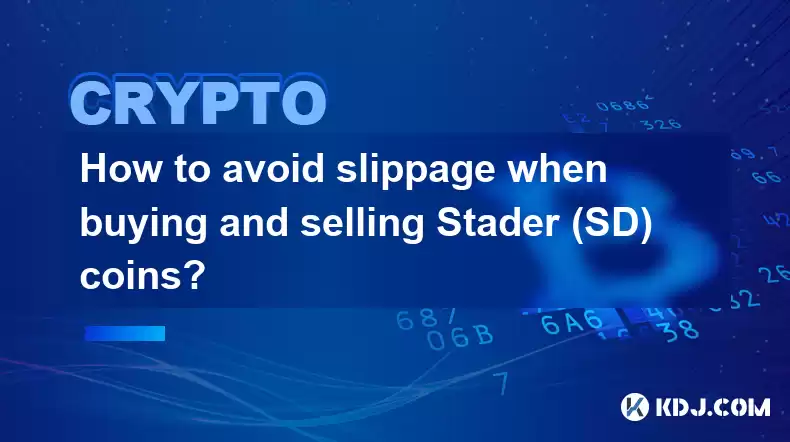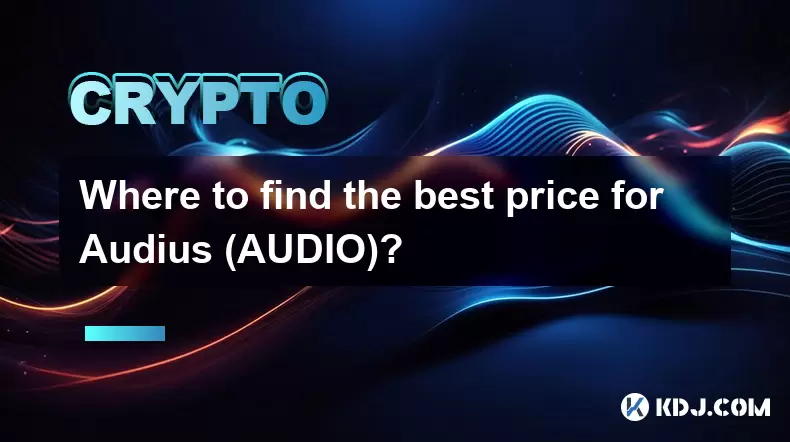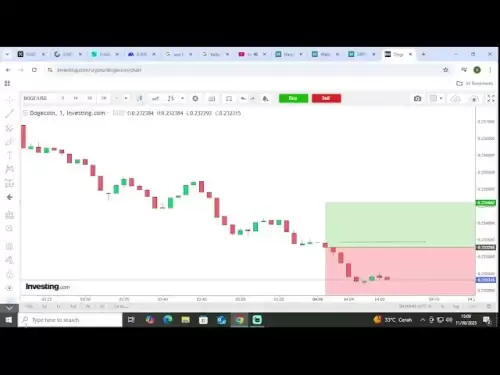-
 Bitcoin
Bitcoin $120300
1.41% -
 Ethereum
Ethereum $4296
2.75% -
 XRP
XRP $3.220
1.46% -
 Tether USDt
Tether USDt $0.9997
-0.04% -
 BNB
BNB $801.6
0.14% -
 Solana
Solana $179.9
0.22% -
 USDC
USDC $0.9998
-0.01% -
 Dogecoin
Dogecoin $0.2302
-0.24% -
 TRON
TRON $0.3405
-0.39% -
 Cardano
Cardano $0.7965
0.53% -
 Hyperliquid
Hyperliquid $44.80
2.57% -
 Chainlink
Chainlink $21.95
2.94% -
 Stellar
Stellar $0.4438
1.68% -
 Sui
Sui $3.767
-1.42% -
 Bitcoin Cash
Bitcoin Cash $584.4
3.24% -
 Hedera
Hedera $0.2554
-0.59% -
 Ethena USDe
Ethena USDe $1.001
-0.02% -
 Avalanche
Avalanche $23.57
0.00% -
 Litecoin
Litecoin $126.6
4.64% -
 Toncoin
Toncoin $3.339
0.94% -
 UNUS SED LEO
UNUS SED LEO $9.001
-0.49% -
 Shiba Inu
Shiba Inu $0.00001320
-0.92% -
 Uniswap
Uniswap $10.84
3.36% -
 Polkadot
Polkadot $3.945
-1.39% -
 Cronos
Cronos $0.1663
4.77% -
 Ethena
Ethena $0.8136
8.48% -
 Dai
Dai $0.0000
0.00% -
 Bitget Token
Bitget Token $4.391
-0.51% -
 Monero
Monero $268.0
0.80% -
 Pepe
Pepe $0.00001169
-1.57%
How to avoid slippage when buying and selling Stader (SD) coins?
While trading SD coins, it's important to set appropriate slippage tolerance to limit the difference between the intended and execution prices, especially during volatile market conditions.
Jan 01, 2025 at 10:25 am

Key Points:
- Understand slippage and its causes
- Employ limit orders for precise pricing execution
- Leverage liquidity pools for efficient large-volume trades
- Monitor market volatility to anticipate price fluctuations
- Utilize slippage tolerance settings for controlled deviations
- Implement post-limit order monitoring to mitigate unexpected execution outcomes
How to Avoid Slippage When Buying and Selling Stader (SD) Coins
Understand Slippage and Its Causes
Slippage refers to the difference between the intended trade price and the actual execution price, typically occurring in volatile markets or during large-volume trades. Slippage arises from various factors, including:
- Market volatility: Extreme price swings can lead to changes in the quoted price before order execution.
- Order size: Large trades can impact market liquidity, potentially triggering price deviations due to the lack of available counterparties.
- Market depth: Thinly traded assets with limited liquidity increase the risk of slippage as the order may not be fully executed at the desired price.
Employ Limit Orders for Precise Pricing Execution
Limit orders allow traders to specify the maximum or minimum price at which they are willing to buy or sell. By placing a limit order, you set the price boundary and avoid slippage beyond that limit.
- Buy limit order: Execute a buy order only if the price drops to or below the specified limit price, ensuring the purchase at or below the desired rate.
- Sell limit order: Place a sell order with a limit price representing the minimum acceptable price. The order triggers only when the coin's price rises to or exceeds the limit, maximizing the potential profit.
Leverage Liquidity Pools for Efficient Large-Volume Trades
Liquidity pools, such as decentralized exchanges (DEXs) like Uniswap and Curve, offer deep liquidity that can facilitate large-volume trades with minimal slippage. These pools aggregate funds from liquidity providers, allowing traders to execute trades without relying on counterparties.
- Use centralized exchanges: Centralized exchanges typically provide higher liquidity than DEXs, but may impose fees or have other limitations.
- Consider DEXs with ample liquidity: Choose DEXs with deep liquidity pools specific to SD coins, ensuring efficient execution of large trades.
Monitor Market Volatility to Anticipate Price Fluctuations
Volatility plays a significant role in slippage, as sudden price swings can result in significant differences between intended and execution prices. To minimize slippage, it's crucial to monitor market conditions before placing an order:
- Check market charts: Study historical price movements of SD coins to gauge volatility patterns and identify potential price trends.
- Observe real-time market data: Use charting tools and market feeds to monitor current market activity and anticipate potential price fluctuations.
Utilize Slippage Tolerance Settings for Controlled Deviations
Some trading platforms allow users to set slippage tolerance, which represents the acceptable deviation from the intended trade price. By specifying a slippage tolerance, you limit the maximum allowable slippage, potentially reducing the risk of unexpected execution outcomes:
- Set appropriate slippage tolerance: Determine an acceptable deviation range based on market conditions and your risk tolerance.
- Consider zero-slippage tolerance for critical trades: For high-precision trades where slippage must be minimized, set the tolerance to zero.
Implement Post-Limit Order Monitoring to Mitigate Unexpected Execution Outcomes
After placing a limit order, actively monitor the market to ensure the order executes optimally. By tracking the order status and market conditions, you can make adjustments as needed:
- Track order status: Use trading platform dashboards or API calls to monitor the execution status of your limit orders.
- Cancel and replace orders: If market conditions change significantly, cancel the existing order and place a new one at a more favorable price.
FAQs:
Q1. What causes slippage in SD coin trading?
- Market volatility, order size, market depth, and exchange execution policies.
Q2. What is a limit order? How does it help avoid slippage?
- A limit order specifies the maximum or minimum execution price, helping to control slippage by protecting against price deviations beyond the limit.
Q3. How can I use liquidity pools to trade SD coins efficiently?
- By utilizing DEXs or centralized exchanges with deep liquidity pools, traders can access ample counterparties for large-volume trades, minimizing slippage.
Q4. Why is it important to monitor market volatility before trading SD coins?
- To anticipate price fluctuations and make informed decisions based on market conditions, reducing the risk of slippage.
Q5. How does slippage tolerance affect SD coin trades?
- Slippage tolerance allows traders to set acceptable deviations from the intended trade price, providing flexibility while limiting potential slippage losses.
Disclaimer:info@kdj.com
The information provided is not trading advice. kdj.com does not assume any responsibility for any investments made based on the information provided in this article. Cryptocurrencies are highly volatile and it is highly recommended that you invest with caution after thorough research!
If you believe that the content used on this website infringes your copyright, please contact us immediately (info@kdj.com) and we will delete it promptly.
- DYDX Price Stays Afloat: Navigating Neutral Momentum with Technical Indicators
- 2025-08-11 20:50:12
- Superman Takes Flight: A Deep Dive into the Comic Program and Coin Medals
- 2025-08-11 20:30:12
- JasmyCoin's Bullish Momentum: Riding the Daily Gain Wave
- 2025-08-11 21:10:12
- Shiba Inu's Comeback Trail and the Meme Coin Mania: Can $SHIB Deliver a 12,000x Return?
- 2025-08-11 18:30:11
- Proof of Trust, Transparency, and User Safety: Keeping Crypto Real
- 2025-08-11 18:50:12
- Pudgy Penguins, Bitcoin Penguins, and the $22M Meme Coin Mania: A New York Perspective
- 2025-08-11 17:10:11
Related knowledge

How to purchase Aragon (ANT)?
Aug 09,2025 at 11:56pm
Understanding Aragon (ANT) and Its PurposeAragon (ANT) is a decentralized governance token that powers the Aragon Network, a platform built on the Eth...

Where to trade Band Protocol (BAND)?
Aug 10,2025 at 11:36pm
Understanding the Role of Private Keys in Cryptocurrency WalletsIn the world of cryptocurrency, a private key is one of the most critical components o...

What is the most secure way to buy Ocean Protocol (OCEAN)?
Aug 10,2025 at 01:01pm
Understanding Ocean Protocol (OCEAN) and Its EcosystemOcean Protocol (OCEAN) is a decentralized data exchange platform built on blockchain technology,...

Where can I buy UMA (UMA)?
Aug 07,2025 at 06:42pm
Understanding UMA and Its Role in Decentralized FinanceUMA (Universal Market Access) is an Ethereum-based decentralized finance (DeFi) protocol design...

How to buy Storj (STORJ) tokens?
Aug 09,2025 at 07:28am
Understanding Storj (STORJ) and Its Role in Decentralized StorageStorj is a decentralized cloud storage platform that leverages blockchain technology ...

Where to find the best price for Audius (AUDIO)?
Aug 11,2025 at 04:01pm
Understanding the Basics of Ethereum StakingEthereum staking refers to the process of locking up ETH tokens to support the security and operations of ...

How to purchase Aragon (ANT)?
Aug 09,2025 at 11:56pm
Understanding Aragon (ANT) and Its PurposeAragon (ANT) is a decentralized governance token that powers the Aragon Network, a platform built on the Eth...

Where to trade Band Protocol (BAND)?
Aug 10,2025 at 11:36pm
Understanding the Role of Private Keys in Cryptocurrency WalletsIn the world of cryptocurrency, a private key is one of the most critical components o...

What is the most secure way to buy Ocean Protocol (OCEAN)?
Aug 10,2025 at 01:01pm
Understanding Ocean Protocol (OCEAN) and Its EcosystemOcean Protocol (OCEAN) is a decentralized data exchange platform built on blockchain technology,...

Where can I buy UMA (UMA)?
Aug 07,2025 at 06:42pm
Understanding UMA and Its Role in Decentralized FinanceUMA (Universal Market Access) is an Ethereum-based decentralized finance (DeFi) protocol design...

How to buy Storj (STORJ) tokens?
Aug 09,2025 at 07:28am
Understanding Storj (STORJ) and Its Role in Decentralized StorageStorj is a decentralized cloud storage platform that leverages blockchain technology ...

Where to find the best price for Audius (AUDIO)?
Aug 11,2025 at 04:01pm
Understanding the Basics of Ethereum StakingEthereum staking refers to the process of locking up ETH tokens to support the security and operations of ...
See all articles

























































































